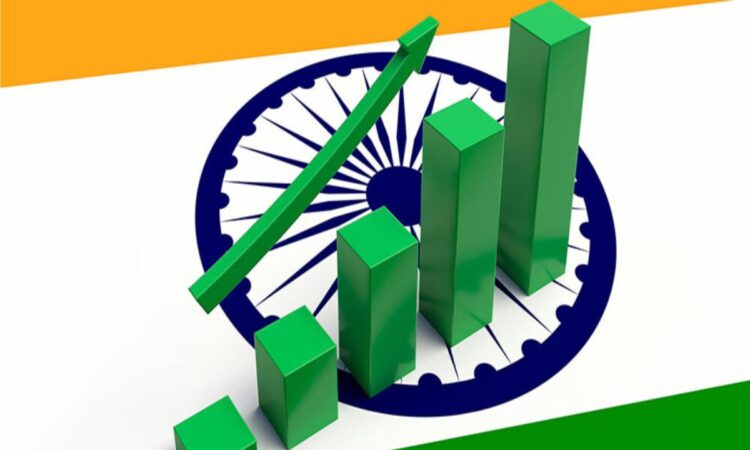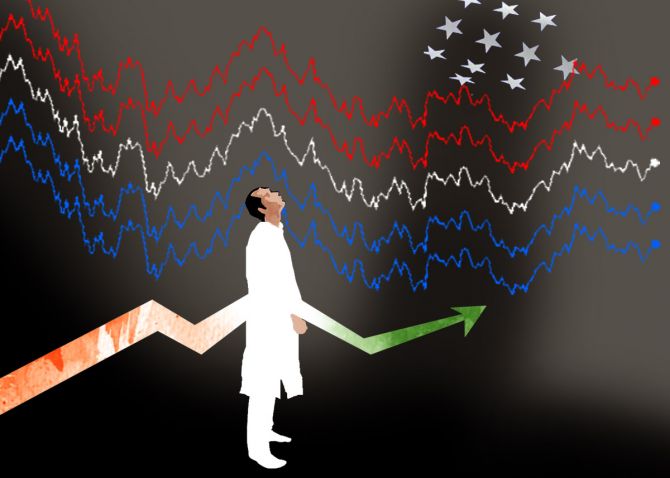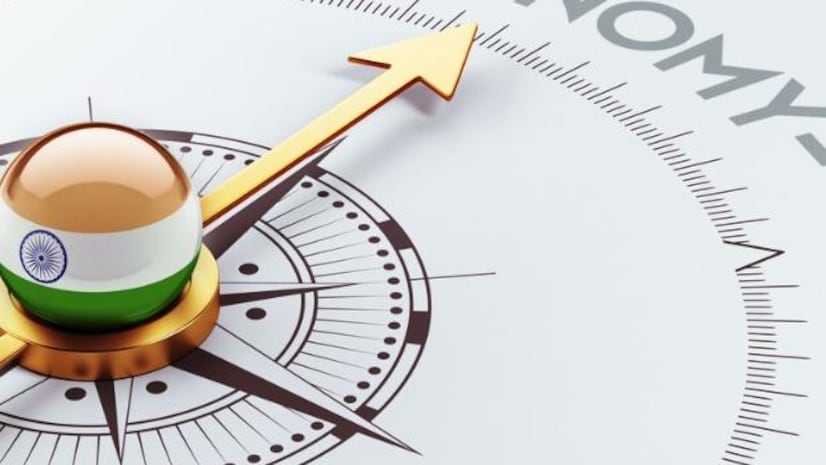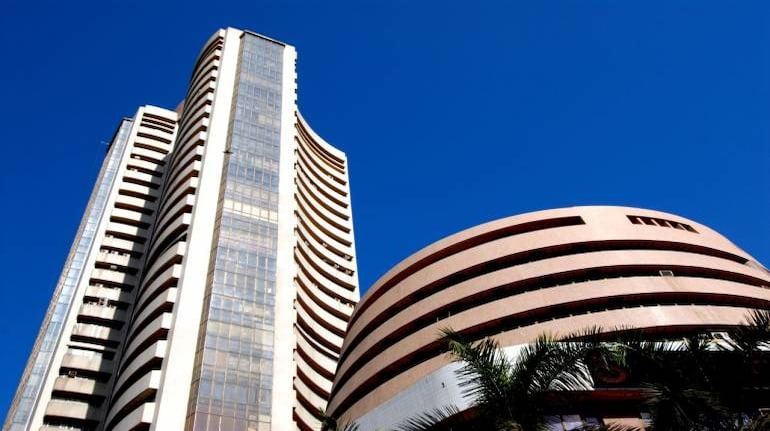The Global Repercussions Would Bring India’s Growing Economy To A Standstill In 2023 As The Globe May Catch A Cold If The Great US Sneezes.

Germany, Europe’s largest economy, has entered a recession. The manufacturing sector downturn has accelerated in the United Kingdom. The Eurozone’s flash manufacturing PMI (Purchasing Managers Index) fell to a 36-month low of 44.6 in May 2023, down from 45.8 in April 2023. Concerns about a Chinese slowdown have rekindled global growth anxiety. According to the IMF, the advanced economies will see “an especially pronounced growth slowdown,” while Morgan Stanley expresses an earnings recession in the United States later this year. Amid this, India’s 7.2% GDP growth in FY23 is essential to view. Though figures is down from 9.1% in FY22, it is still much higher than expected.
Is India an exception in a world plagued by growth concerns, and can this outperformance be sustained?

Let’s start with the Development Story.
The RBI Monetary Policy Committee forecasted 6.8% growth for FY23 during its December meeting. Growth in the January-March 2023 quarter was 6.1%, above the predicted 4.1%. The service industry, construction, trade, and transportation have all witnessed strong growth.
This is encouraging news for equities investors.
- The Indian stock market has risen 7% in the last 60 days because the worst of the Ukraine-Russia conflict and increasing interest rates, which were weighing on the global economy, emerges to have passed.
- Commodity prices are constant, and the USD rate is not volatile.
This paves a way to a large and long-term bet on Indian markets, a popular destination for investors seeking to infuse their funds in emerging economies.
Views from different experts on the Indian economy.
According to a Goldman Sachs analysis, India has attractive long-term beta and outsized alpha potential in emerging markets due to a domestic macro environment that seems stable given peak inflation/rates and a current sustainable account. In the last two decades, India’s economy has grown sevenfold, with a nominal GDP CAGR of 10%. Equity returns have matched this strong economic performance, with the BSE 200 offering 16%/13% annualised returns in local currency/USD terms, nearly double the 7% offered by the MSCI EM Index, it noted last week in a report.

According to a Morgan Stanley analysis, Indian stock markets are defensive since their beta (measure of volatility) is low compared to other emerging markets. FMCG is one example of a defensive market. They are resistant to inflation and have predictable growth rates. This is a sector noted for providing great long-term returns with little volatility. Based on SIP flows in the Indian market, it emerges that Indian investors are here to stay in the long run unless high-interest rates hinder growth.
Services sparkle, causing concern.
Today, India’s growth is entirely service-oriented, and manufacturing must catch up. The Nifty 50 Index is heavily weighted in favour of services and banking, accounting for more than half of the entire weight in terms of market capitalisation. However, the manufacturing sector stays a source of concern, which may hurt stock-market returns in the future. As it raises people’s wages across the board, the sector is critical for providing widespread employment and putting the groundwork for long-term economic growth.
Unfortunately, growth in the area was a meagre 1.3% in 2022-23, considerably lower than the agricultural industry’s 4%. This is much lower than the manufacturing sector’s 11.1% expansion in 2021-22. The path ahead is fraught with complications, owing to the predicted downturn in global demand, tighter financial circumstances as the last rate rises to catch up, and the perils of EI Nino and lower monsoons, which substantially influence rural demand.
Aside from the high base for FY24, it is conscious of two-way forces for the economy in the year ahead – tailwinds from declining inflation/energy costs, sustained government capex push, better faring services, and relatively resilient US growth, while uncertainties linger due to the lag effect of tighter financial conditions, narrower liquidity surplus, and subdued global growth trend, wrote Radhika Rao, senior economist at DBS Bank, in a report last week.
She noted that these opposing pressures compelled them to revise the FY24 GDP growth forecast to 6%, which is still a significant outperformer compared to regional peers but less cautious than the RBI’s expectation of 6.5%.
The impact of Global sluggishness.
Aside from local problems, the lacklustre growth in advanced countries and even recession in certain countries will impact India’s economy this year. The trajectory of inflation and the duration of the high-interest-rate regime in the United States would dictate the fate of developing market economies.
The IMF expects global growth to dip from 3.4% in 2022 to 2.8% in 2023 in its April 2023 World Economic Outlook. Growth in advanced economies is predicted to drop significantly, from 2.7% in 2022 to 1.3% in 2023. In a likely alternative scenario with more financial sector stress, global GDP will fall to around 2.5% in 2023, with advanced economies sliding below 1%, according to the IMF. A decrease in global per-capita real GDP in 2023, commonly occurring during a global recession, is assessed to have a 15% possibility.
- Household spending in Europe is being influenced by persistently high inflation and rising interest rates.
- Germany’s GDP fell 0.3% in the January-March 2023 quarter after falling 0.5% in the October-December 2022 quarter.
- The US and the European Union account for 33% of India’s goods exports. Thus, a downturn in these markets will have an impact.
Morgan Stanley expects a gentle landing for the US economy in 2023, despite forecasting an earnings recession for corporations.
They anticipate a steady reduction in core inflation, which will keep the FED on hold until March 2024, when it will begin to normalise policy with quarter-point rate drops every three months. The likelihood of a recession stays a concern this year due to financial problems with unclear economic spillovers from tighter lending, according to Ellen Zentner, Morgan Stanley’s top US economist, on May 19.

If credit growth slows more than predicted, it will have a greater impact on investment, consumption, and labour. Against this context, they expect a dramatic downturn in the US economy in the second two quarters of the year; thus, she warned that even minor snags may tip India into a recession. Economists are pessimistic about India’s development prospects in the face of a global slowdown, affecting exports and the capex cycle. So far, the government has used heavy-lifting capex and other measures, like production-linked incentives, to encourage the private sector to invest.
The increase in investment shows that private capex is picking up. However, private spending, while increasing, remains slow owing to excessive inflation. There is some relaxation on the inflation front, with April readings for Consumer Price Index (CPI)-based inflation falling to an 18-month low of 4.7% from 5.7% in March, allowing the FED to leave interest rates on hold.
The overall policy framework and regulations will determine the medium-to-long-term quality of growth. There will be some setbacks, but it will not reach its full potential. According to Sunil Kanoria, former president of industry organisation Assocham and co-founder of Srei Group, growth of 6%-7% is now considered average for India.
The interest rate game and the prospects.
A stronger-than-expected GDP figure has further bolstered the argument for the RBI to keep rates on hold at its three-day meeting, which concludes on June 8. The RBI maintained the repo rate in its April policy after raising it by 250 basis points since May last year to combat increasing prices.
According to Crisil, while domestic interest rates have risen more slowly than in advanced countries, bank lending rates have now approached the pre-pandemic five-year average. According to the report, this is projected to cool domestic demand, particularly in interest-sensitive sectors like auto and homes.

Inflation is predicted to reduce from 6.7% in FY23 due to decreasing domestic demand, the base effect, and global commodity price corrections. Nomura economists predict that when the cyclical macro regime moves from higher to lower growth despite restrained inflation, policy attention will shift from inflation to growth support. They maintain the view of 75bps of cumulative rate cuts beginning in October, lowering the repo rate to 5.75% by March 2024, the bank wrote in a note.
The likelihood of a rate drop bodes favourably for foreign capital inflows into the debt and equities markets. Indeed, when international investors bet on India’s economic narrative, this would be the icing on the cake.
According to CLSA, foreign investor commitment to EM stocks in 2022 was initially driven by demand for Brazil, Saudi Arabia, Indonesia, and Thailand. Still, by 2023, the emphasis has changed to Taiwan, Korea, and, most recently, India.
India has also small net foreign inflows year so far throughout ASEAN. Malaysia, the Philippines, and Thailand, and South Africa, Mexico, and Turkey, have experienced net foreign selling for at least the third straight year, according to a May 31 report.
Conclusion.
The latest GDP report has reaffirmed investors’ belief in India’s development narrative. However, authorities’ determination to protect the economy from a global downturn will be closely monitored since when the superpower US sneezes, the rest of the world catches a cold.
Proofread & Published By Naveenika Chauhan






